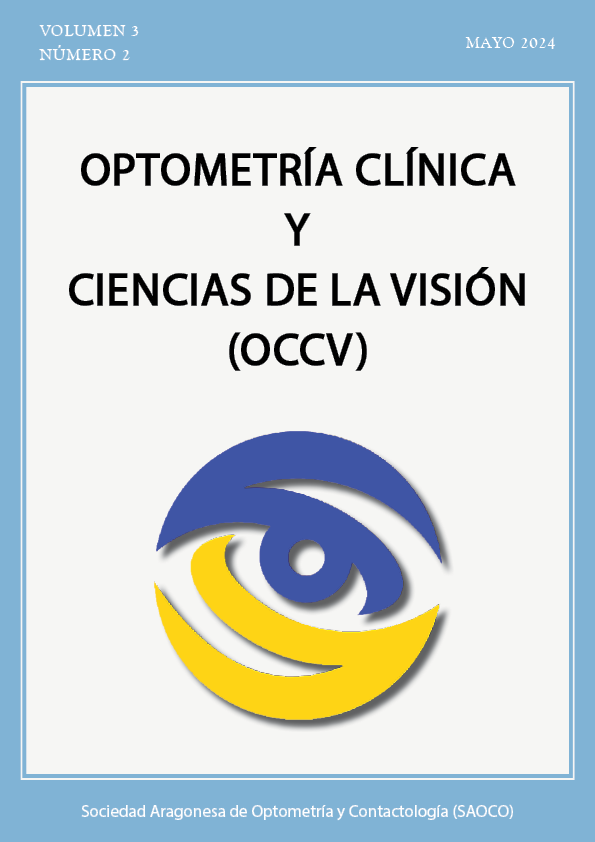Relationship between visual skills and physical activity practice in children
DOI:
https://doi.org/10.71413/hp77z049Keywords:
ocular motility, Children, Visual Skills, Physical activityAbstract
Relevance: There is substantial evidence affirming the benefits of engaging in sports activities on the physical, mental, and cognitive health of children. The latest guidelines from the World Health Organization (WHO) in 2020, for children aged 5 to 17, recommend 60 minutes of physical activity per day, and advise incorporating vigorous physical activity for at least 3 hours a week.
Purpose: The aim of this study is to determine if engaging in sports activities according to WHO recommendations has positive effects on the visual system of children.
Methods: Fifty-six students, 31 girls and 25 boys, with an average age of 8.84±0.37 years, were recruited. They underwent a visual assessment consisting of visual acuity, ocular motility, visual reaction time, and hand-eye coordination. Each student was asked about the amount of physical activity they engaged in per week. The sample was divided into groups based on the amount of exercise they performed (>3 hours/week or <3 hours/week) and whether they competed at a federated level. Data were analyzed using SPSS via t-tests.
Results: Significant differences were found in the motility of children who engaged in sports for more than 3 hours per week, with their motility being more precise. Students who competed in a sports discipline scored higher in tracking movements. No statistically significant differences were found for the remaining variables, including gender and age.
Conclusions: According to the results obtained, engaging in physical activity following WHO recommendations also benefits the visual system of children, improving their ocular motility. Whether children compete or not also leads to improvements in ocular motility.
References
Bull FC, Al-Ansari SS, Biddle S, Borodulin K, Buman MP, Cardon G, et al. World Health Organization 2020 guidelines on physical activity and sedentary behaviour. Br J Sports Med. 2020;54(24):1451-62. DOI: https://doi.org/10.1136/bjsports-2020-102955
Benavente-Marín JC, Barón-López FJ, Gil Barcenilla B, Longo Abril G, Rumbao Aguirre JM, Pérez-Farinós N, et al. Adherence to the WHO recommendation of three weekly days of vigorous intensity activities in children: an accelerometry study of vigorous physical activity bouts. PeerJ. 2024;12:e16815. DOI: https://doi.org/10.7717/peerj.16815
Song Y, Shi C. Association between sports participation and overall health in children and adolescents. Complement Ther Clin Pract. 2023;51:101718. DOI: https://doi.org/10.1016/j.ctcp.2022.101718
Hassan MA, Liu W, McDonough DJ, Su X, Gao Z. Comparative Effectiveness of Physical Activity Intervention Programs on Motor Skills in Children and Adolescents: A Systematic Review and Network Meta-Analysis. Int J Environ Res Public Health. 2022;19(19). DOI: https://doi.org/10.3390/ijerph191911914
Yang Y, Zhu H, Chu K, Zheng Y, Zhu F. Effects of sports intervention on aggression in children and adolescents: a systematic review and meta-analysis. PeerJ. 2023;11:e15504. DOI: https://doi.org/10.7717/peerj.15504
Zhang Y, Yan J, Jin X, Yang H, Ma H, Ma R. Sports Participation and Academic Performance in Primary School: A Cross-Sectional Study in Chinese Children. Int J Environ Res Public Health. 2023;20(4). DOI: https://doi.org/10.3390/ijerph20043678
Additional Files
Published
Issue
Section
Categories
License
Copyright (c) 2024 Dña. Rut González Jiménez, Prof. Ricardo Bernárdez Vilaboa, Dña. María Sanz Antolín, D. Rafael Barañano Alcaide (Autor/a)

This work is licensed under a Creative Commons Attribution-NonCommercial 4.0 International License.



